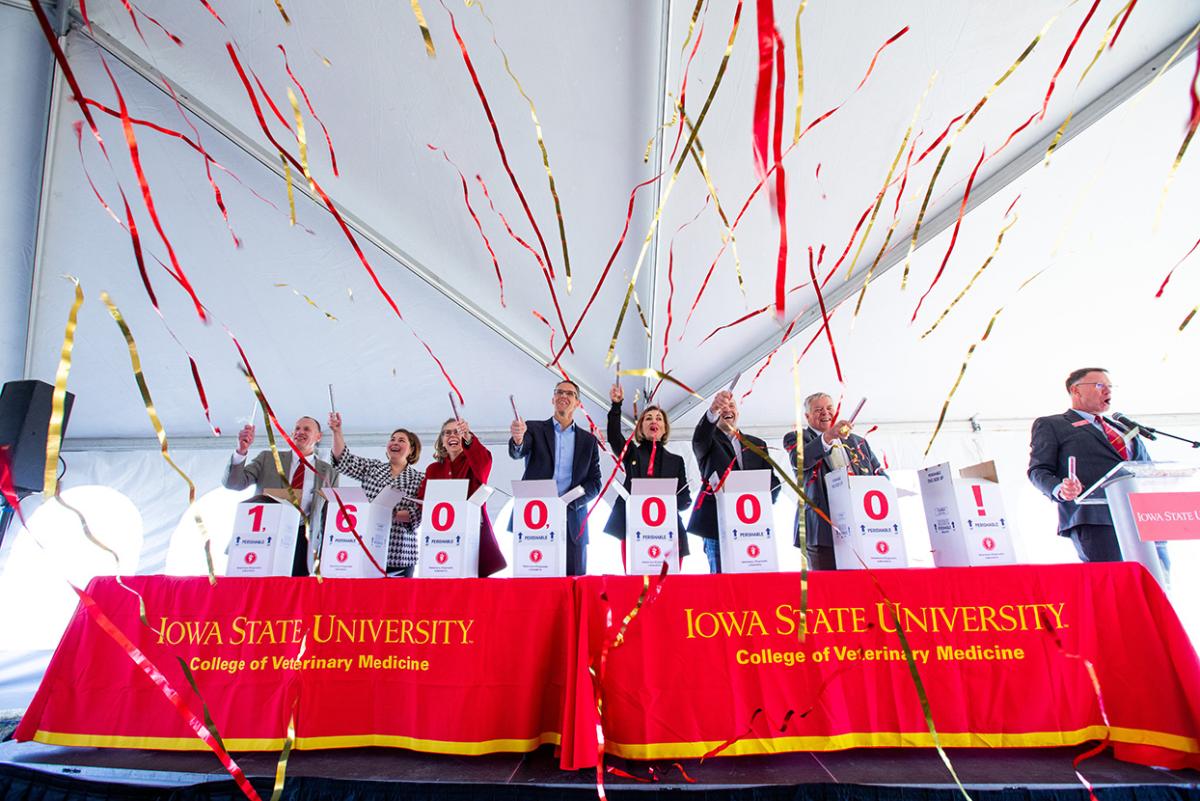
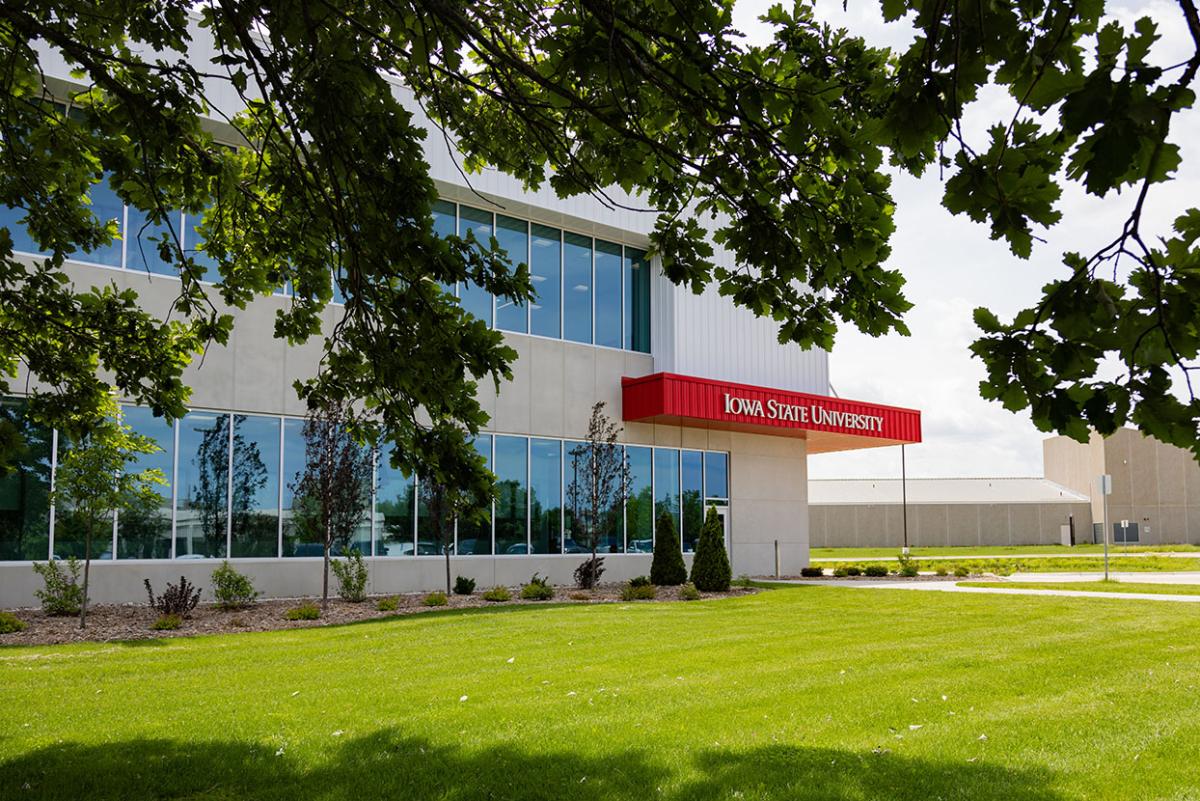
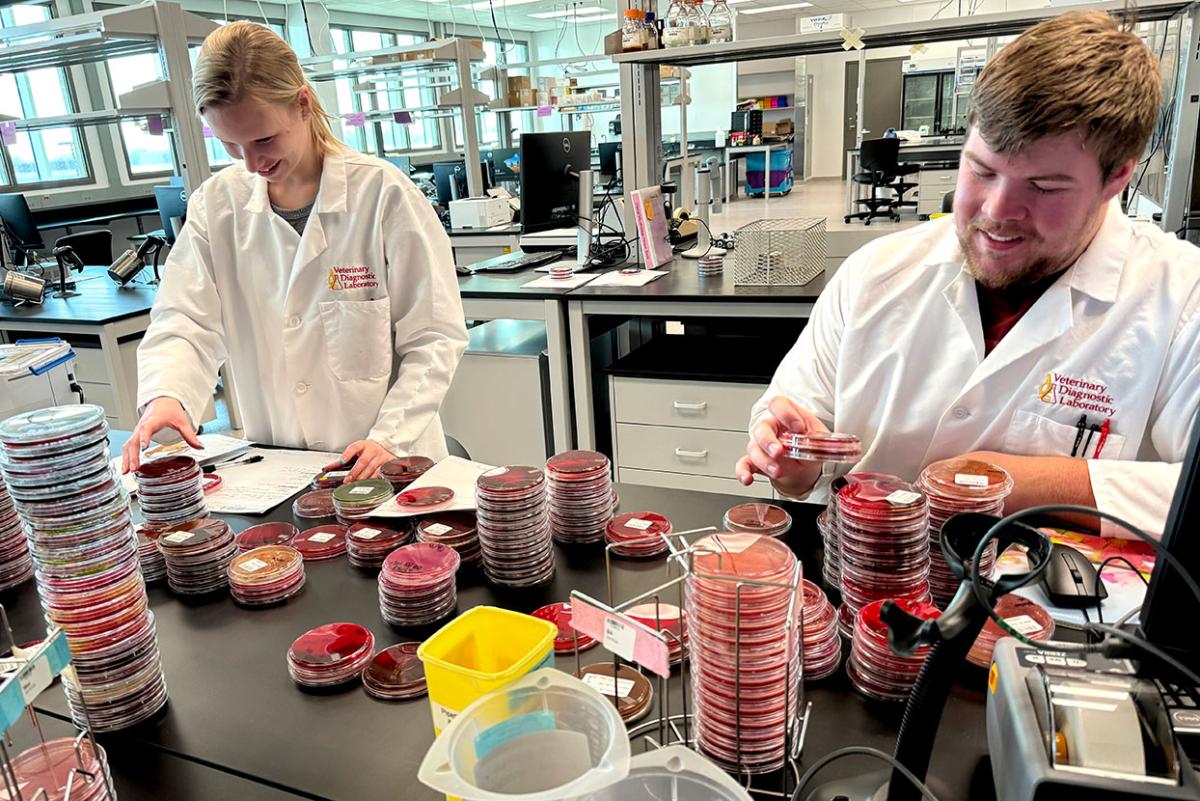
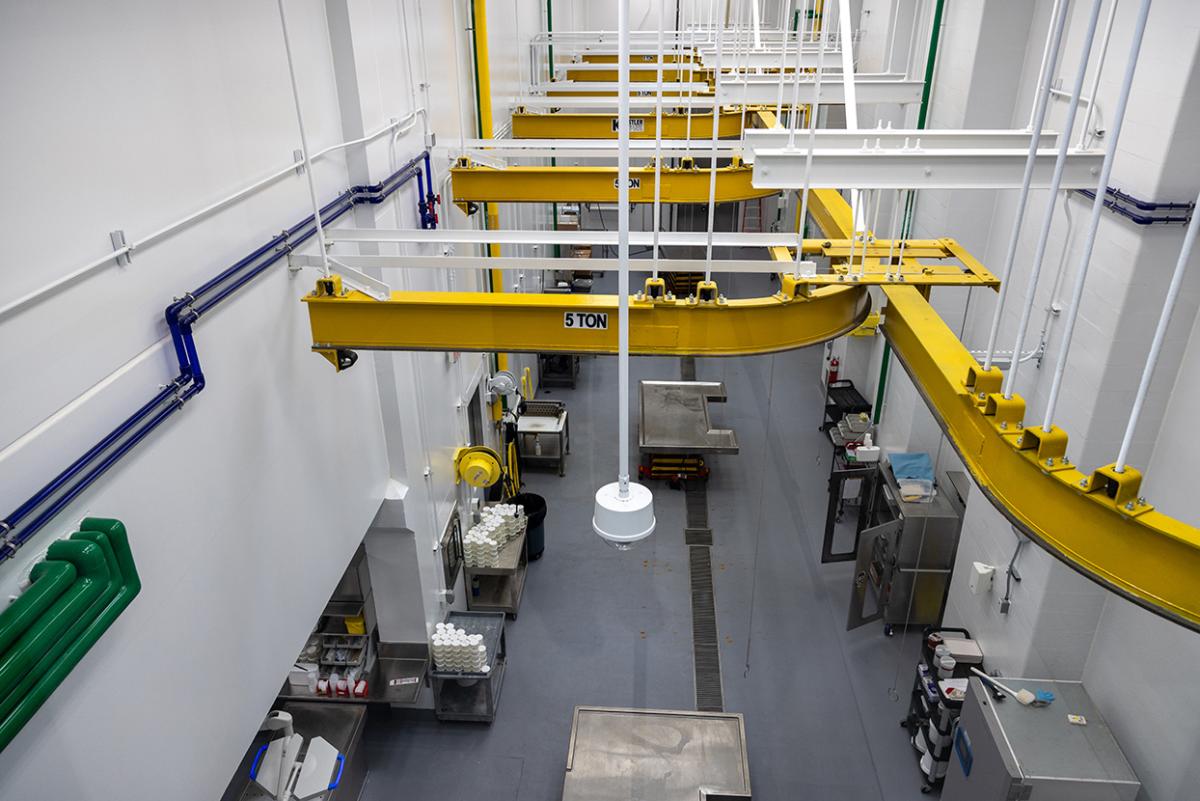
There’s no project, no goal that’s not within the reach of the faculty and staff of the Veterinary Diagnostic Laboratory.
After all, it is the largest diagnostic laboratory in the country. Over 1.6 million tests are conducted annually. That’s more than 125,000 cases.
It serves the most progressive livestock and poultry producers in the world with 95% of the testing performed for the animal agriculture industry.
It is not only the largest diagnostic laboratory in the United States, but is considered to be one of the finest as well.
“Hands down, the Iowa State University Veterinary Diagnostic Laboratory is recognized globally as a leader in veterinary diagnostic medicine, especially in the support of animal agriculture,” said Dr. Dan Grooms, the Dr. Stephen G. Juelsgaard Dean of Veterinary Medicine.
And as of March 2024, there’s a brand-new tool in the already-impressive toolbox that is the VDL.
Phase 1 of a $143.5 million project was completed three years after construction began. Faculty and staff have moved into the new 101,000-square-foot facility and are fully operational.
Client services, receiving and accessioning, sample processing, necropsy, pathology, histopathology, bacteriology and a new incinerator moved across the parking lot from their old home in Patterson Hall.
“The new facility will further strengthen the VDL as a national leader in advancing animal health, food safety and public health,” said Iowa State University President Wendy Wintersteen. “The VDL’s world-class expertise and innovative solutions provide essential support for our livestock and poultry producers and benefit all Iowa.
A Global Impact
Over its 47-year history, the work the VDL does every day impacts animal health, public health, agriculture economics and food security in Iowa and beyond. A few examples include:
- When porcine epidemic diarrhea reached the U.S. in 2013, it was scientists and clinicians in the VDL who were the first to identify the outbreak and pinpoint where it originated. Iowa State developed control strategies including rapid diagnostic capabilities.
- Each time highly pathogenic avian influenza has hit Iowa and the U.S., producers have looked to the VDL to help diagnose affected flocks and contain the crisis. The work performed at Iowa State allowed operations to demonstrate they were free of disease so they could continue to market their products.
- Just this spring, highly pathogenic avian influenza has had another deadly impact on America’s animal agriculture industry. It was diagnosticians at the VDL who identified the disease, allowing producers to better understand this emerging disease threat (see page 8).
“In addition to serving Iowa’s animal agriculture and helping protect the global food supply through world-class diagnostic services, the VDL is also a hub of innovation,” Grooms said. “What separates Iowa State’s VDL from most others is our advancement around animal diagnostic medicine, whether it is developing a new diagnostic test or discovering a novel pathogen.”
One such diagnostic tool is one that will be felt world-wide. Recently a team led by Dr. Philip Gauger and Dr. Rahul Nelli developed a diagnostic test for swine to detect Japanese encephalitis virus, a mosquito-borne disease common in southeast Asia.
And it’s not just animal health where the VDL has had an impact. During the early days of the COVID-19 pandemic, the VDL stepped up and pivoted to provide needed diagnostic capacity and capabilities to help the State of Iowa respond to this crisis.
“At its core, the Veterinary Diagnostic Laboratory plays a substantive behind the scenes role in safeguarding and bettering the health and well-being and the competitiveness of Iowa and U.S. animal agriculture, ensuring a safe, abundant and affordable food supply for our great state and nation,” said Dr. Rodger Main, VDL director.
“The extraordinary faculty and staff of the VDL do the work necessary to deliver high quality, accurate and timely diagnostic services to the people of Iowa, across the United States, and now globally,” Grooms said.
“Without them, none of this would be possible.”
An Additional Benefit
While the VDL plays a substantial role in protecting and advancing animal health, it also serves as a living laboratory for training the next generation of veterinarians and scientists.
In Phase 1, graduate students have dedicated office space. Fourth-year DVM students have the opportunity to participate in clinical rotations on the necropsy floor and in the bacteriology unit where a teaching lab has been constructed nearby.
“This new facility will serve as a living training facility as the College of Veterinary Medicine continues its 145-year legacy of training veterinarians and scientists to serve society globally,” Grooms said. “The facility will enable us to develop veterinarians and scientists, discover answers to important questions, and deliver cutting-edge services to the people of Iowa and beyond.
A Strong Commitment
Construction of Phase 1 was made possible through a $63.5 million appropriation from the State of Iowa with the remaining funding for the $75 million project coming from private donors and Iowa State University.
The Iowa Legislature provided $18 million for Phase 2 construction. This is in addition to $40 million from funds directed to Iowa in the Federal American Rescue Plan Act of 2021. Fundraising and Iowa State funding will make up the rest of the $66.5 million project.
“We are deeply grateful for the state’s support for both phase 1 and phase 2,” Grooms said. “This project would not have been possible without the unyielding support of our stakeholders, particularly the commodity groups and the Iowa Veterinary Medical Association.
“Their support through their voices and financial commitment was essential of the new VDL becoming a reality.
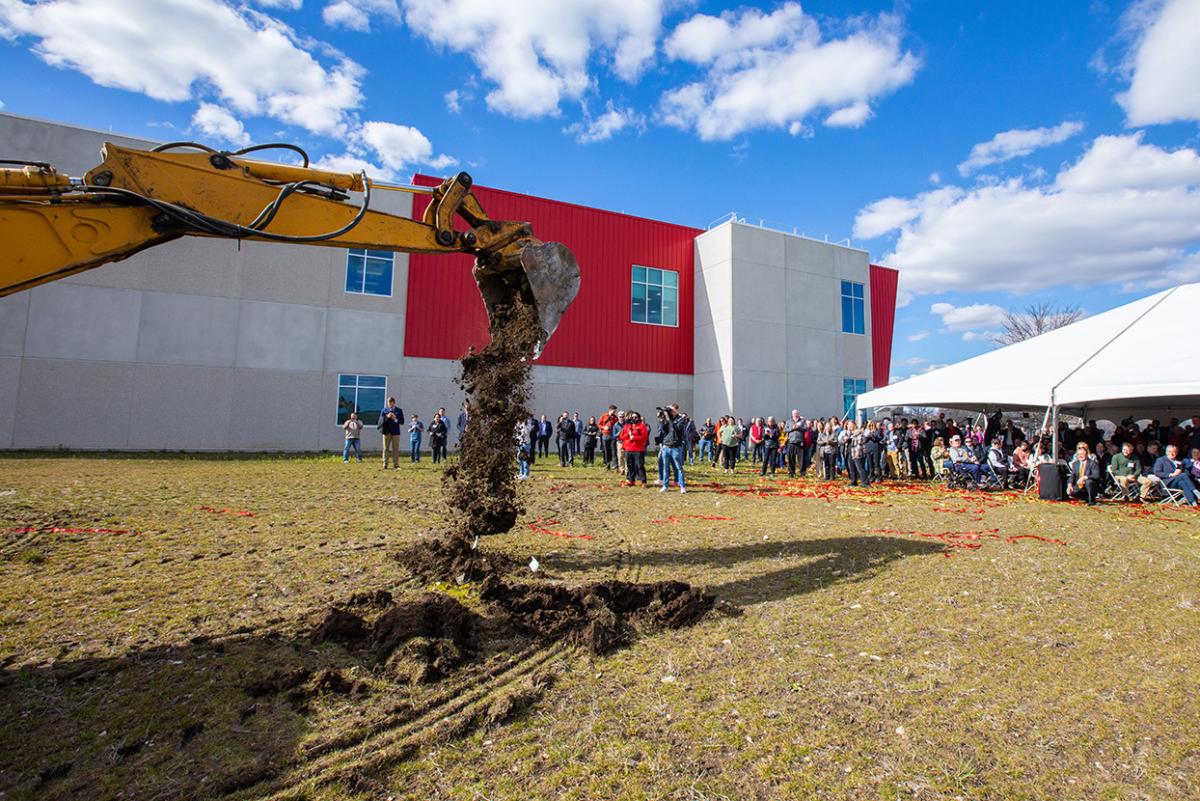
Next Stop: Phase 2
Even before the last box was unpacked at the new Veterinary Diagnostic Laboratory, work was already underway for phase 2 of the massive project.
In reality, planning for the second phase of the VDL was simultaneous with the original plans for the first building, which was constructed so that an already preconceived addition can be readily built on.
That’s now happening on the site adjacent to the current facility.
Construction began in the spring of 2024, just a month after the first building was operational. Construction is slated to be completed in the fall of 2026.
Until then 80 percent of the lab’s testing functions will continue in their current space in Patterson Hall until the 78,500 square-foot new facility is finished. This includes molecular diagnostics, genetic sequencing, virology, serology, and analytical chemistry and toxicology. A BSL-3 (high biosecurity diagnostics) laboratory and the VDL’s diagnostic and research development are also planned for the second phase.
In addition, the VDL’s administrative staff and support functions including information technology and quality assurance will move into the building in 2026.
“I can only imagine what our extraordinary scientists and diagnosticians will do in this new facility when it is completed,” Grooms said.
July 2024
